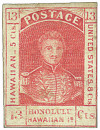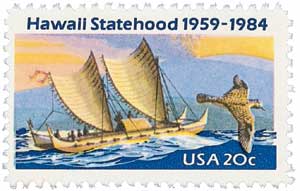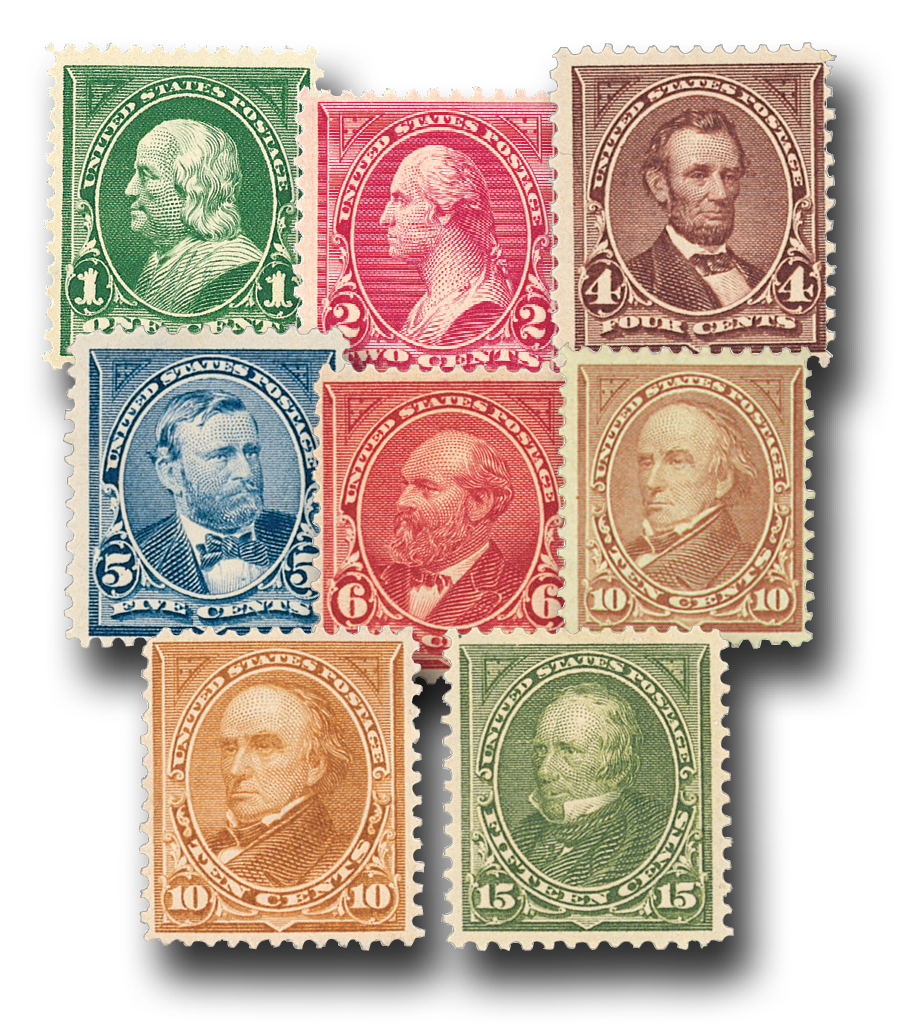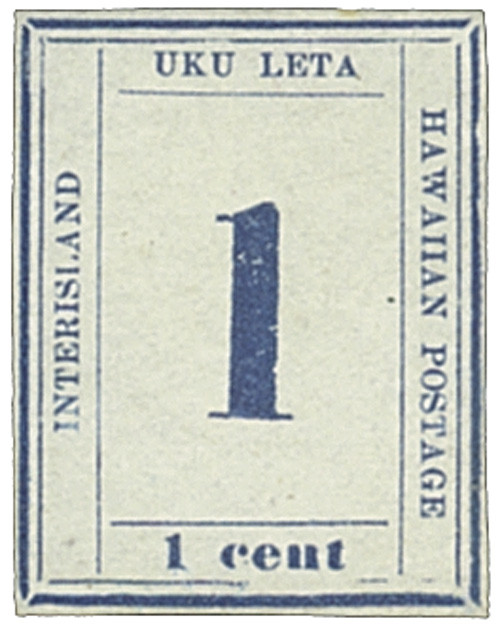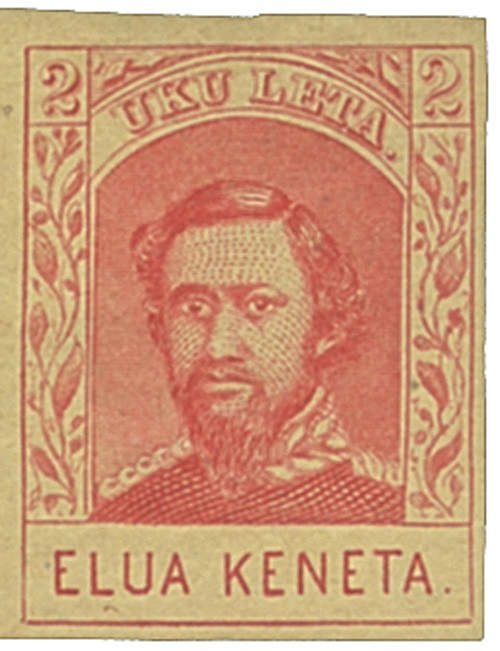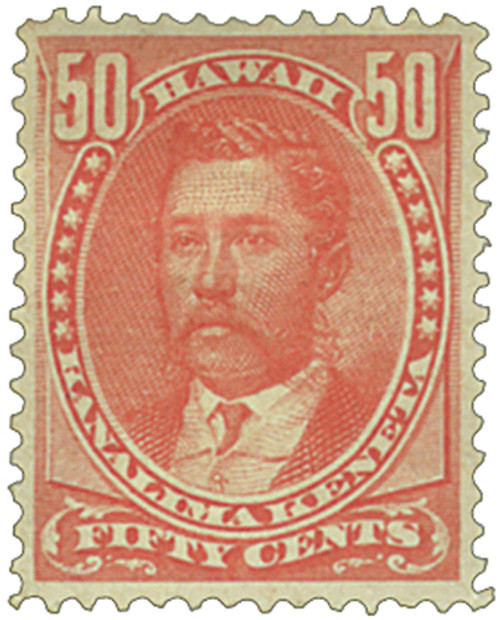
# H6 - 1853 13c Hawaii, dark red, thick wht wove paper
Scarce Mint Kingdom of Hawaii Stamp –
And Even Scarcer Postally Used Stamp!
This is one of those intriguing instances where a postally used stamp – even if it has minor flaws – is scarcer and more desirable than a mint stamp.
Issued by the Kingdom of Hawaii in 1853, this 13¢ stamp pictures King Kamehameha III. Very few postally used Kingdom of Hawaii stamps have survived. So used stamps are more difficult to obtain.
Today you can choose either a postally used or mint stamp for your collection.
Hawaii Becomes A U.S. Territory
American missionaries arrived in Hawaii in 1820. As the white population grew, it became apparent that postal provisions were a necessity. The first attempt at establishing postal regulations was made in the 1840s, with the Organic Act. This was a series of three laws, the second of which established postal rates for inter-island mail and mail to the U.S. These laws were never put into effect.
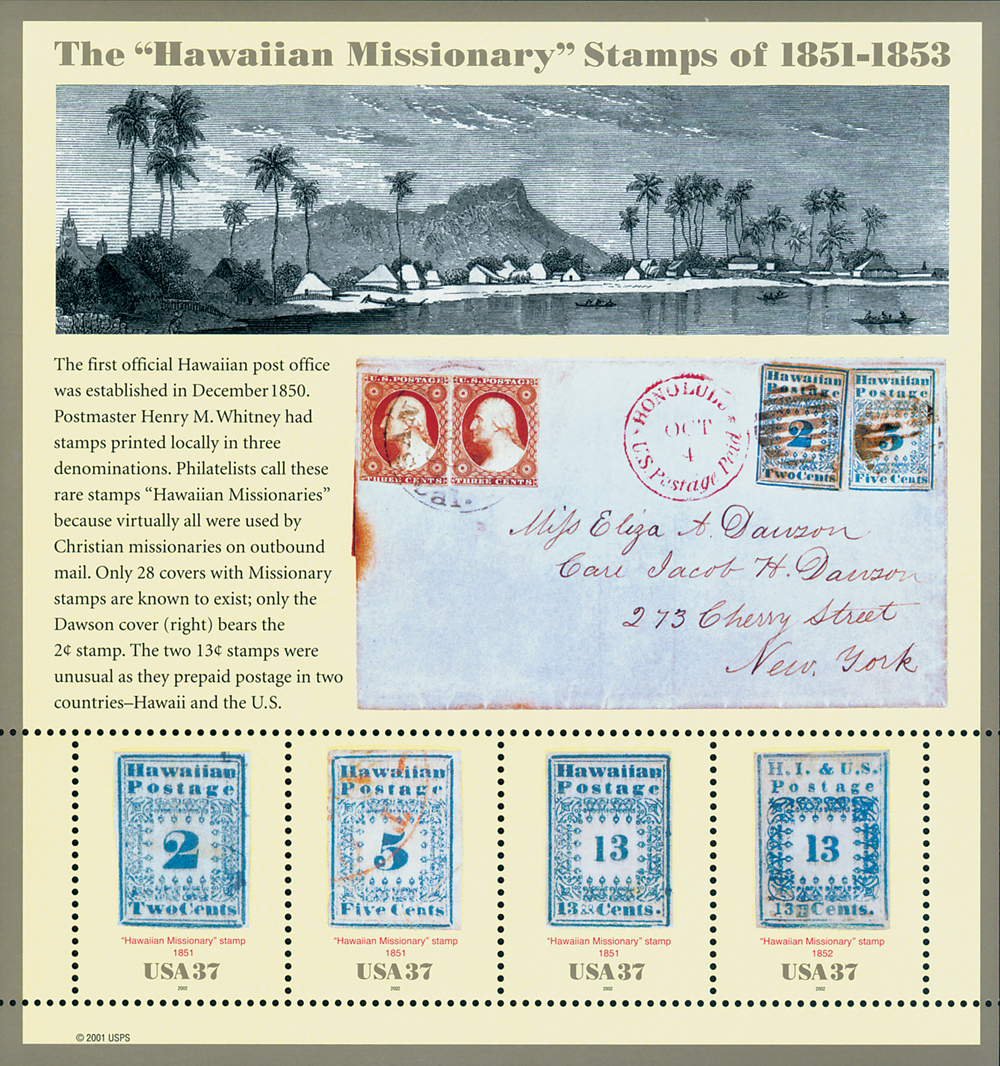
At the time, Hawaii had a government-printed newspaper, called The Polynesian, which published letters from the residents of the islands, complaining about the lack of a postal system. The first Hawaiian stamps were printed in the same office that printed The Polynesian. It was not until October 1, 1851, that these first stamps, called the “Missionaries,†were sold.
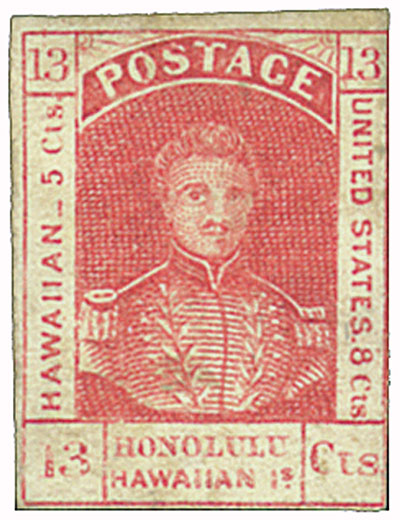
In 1853 new stamps picturing King Kamehameha III were printed in Boston. “Plain Border Numerals†followed these in 1859. These stamps were printed in Hawaii using the same methods as the previous Missionaries. These stamps were produced in limited runs, as they were unsure of the future of their postal system. So they were printed a total of nine times.
Then in 1861 the Hawaii post began producing stamps honoring Hawaiian royalty. For over 30 years, Hawaii’s stamps pictured kings, queens, princes, and princesses. But in 1893, Queen Liliuokalani was overthrown and the monarchy was replaced with a republic.
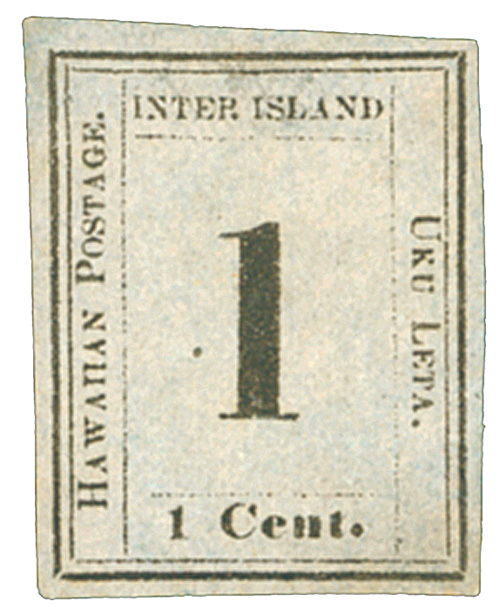
In the first year after the overthrow, a Provisional Government ruled Hawaii. The previous stamps were still used, but with an overprint marking the difference. On July 4, 1894, the Republic of Hawaii began – even as representatives were negotiating with the American government to be added to the United States.
In conjunction with the new Republic, a new set of stamps, known as the Pictorials, was issued. E.W. Holdsworth of Honolulu, who was the winner of a design contest advertised in the Commercial Advertiser newspaper, designed them. Holdsworth received $10 for each accepted stamp design.
Six stamps were issued for the Republic of Hawaii, with five of them issued before the new government officially began. The sixth was issued on October 27, 1894. It had the inscription “Republic of Hawaii†added to reflect the new status, making it the only stamp of its kind in the world.
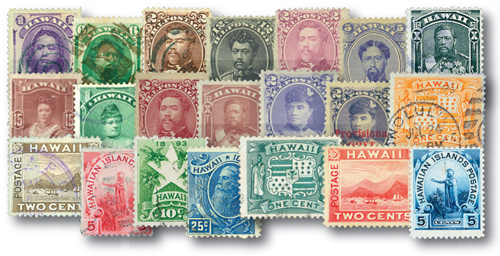
The new stamps were used through June 13, 1900. In 1898, Hawaii was finally added to the U.S. Oddly, Hawaii briefly kept its status as a republic while being a U.S. possession at the same time. Three more stamps were issued in 1899, and used until Hawaii officially became a U.S. territory on June 14, 1900. At that time, all Hawaii stamps were “demonetized†(marked as having no value), and regular U.S. stamps were used instead. The U.S. stamps in use at the time included the Universal Postal Union Colors stamps as well as the Trans-Mississippi Exposition commemoratives.
Â
Â
Â
Â
Â
Â
Click here for more Hawaii stamps.
Â
Scarce Mint Kingdom of Hawaii Stamp –
And Even Scarcer Postally Used Stamp!
This is one of those intriguing instances where a postally used stamp – even if it has minor flaws – is scarcer and more desirable than a mint stamp.
Issued by the Kingdom of Hawaii in 1853, this 13¢ stamp pictures King Kamehameha III. Very few postally used Kingdom of Hawaii stamps have survived. So used stamps are more difficult to obtain.
Today you can choose either a postally used or mint stamp for your collection.
Hawaii Becomes A U.S. Territory
American missionaries arrived in Hawaii in 1820. As the white population grew, it became apparent that postal provisions were a necessity. The first attempt at establishing postal regulations was made in the 1840s, with the Organic Act. This was a series of three laws, the second of which established postal rates for inter-island mail and mail to the U.S. These laws were never put into effect.

At the time, Hawaii had a government-printed newspaper, called The Polynesian, which published letters from the residents of the islands, complaining about the lack of a postal system. The first Hawaiian stamps were printed in the same office that printed The Polynesian. It was not until October 1, 1851, that these first stamps, called the “Missionaries,†were sold.

In 1853 new stamps picturing King Kamehameha III were printed in Boston. “Plain Border Numerals†followed these in 1859. These stamps were printed in Hawaii using the same methods as the previous Missionaries. These stamps were produced in limited runs, as they were unsure of the future of their postal system. So they were printed a total of nine times.
Then in 1861 the Hawaii post began producing stamps honoring Hawaiian royalty. For over 30 years, Hawaii’s stamps pictured kings, queens, princes, and princesses. But in 1893, Queen Liliuokalani was overthrown and the monarchy was replaced with a republic.

In the first year after the overthrow, a Provisional Government ruled Hawaii. The previous stamps were still used, but with an overprint marking the difference. On July 4, 1894, the Republic of Hawaii began – even as representatives were negotiating with the American government to be added to the United States.
In conjunction with the new Republic, a new set of stamps, known as the Pictorials, was issued. E.W. Holdsworth of Honolulu, who was the winner of a design contest advertised in the Commercial Advertiser newspaper, designed them. Holdsworth received $10 for each accepted stamp design.
Six stamps were issued for the Republic of Hawaii, with five of them issued before the new government officially began. The sixth was issued on October 27, 1894. It had the inscription “Republic of Hawaii†added to reflect the new status, making it the only stamp of its kind in the world.

The new stamps were used through June 13, 1900. In 1898, Hawaii was finally added to the U.S. Oddly, Hawaii briefly kept its status as a republic while being a U.S. possession at the same time. Three more stamps were issued in 1899, and used until Hawaii officially became a U.S. territory on June 14, 1900. At that time, all Hawaii stamps were “demonetized†(marked as having no value), and regular U.S. stamps were used instead. The U.S. stamps in use at the time included the Universal Postal Union Colors stamps as well as the Trans-Mississippi Exposition commemoratives.
Â
Â
Â
Â
Â
Â
Click here for more Hawaii stamps.
Â



